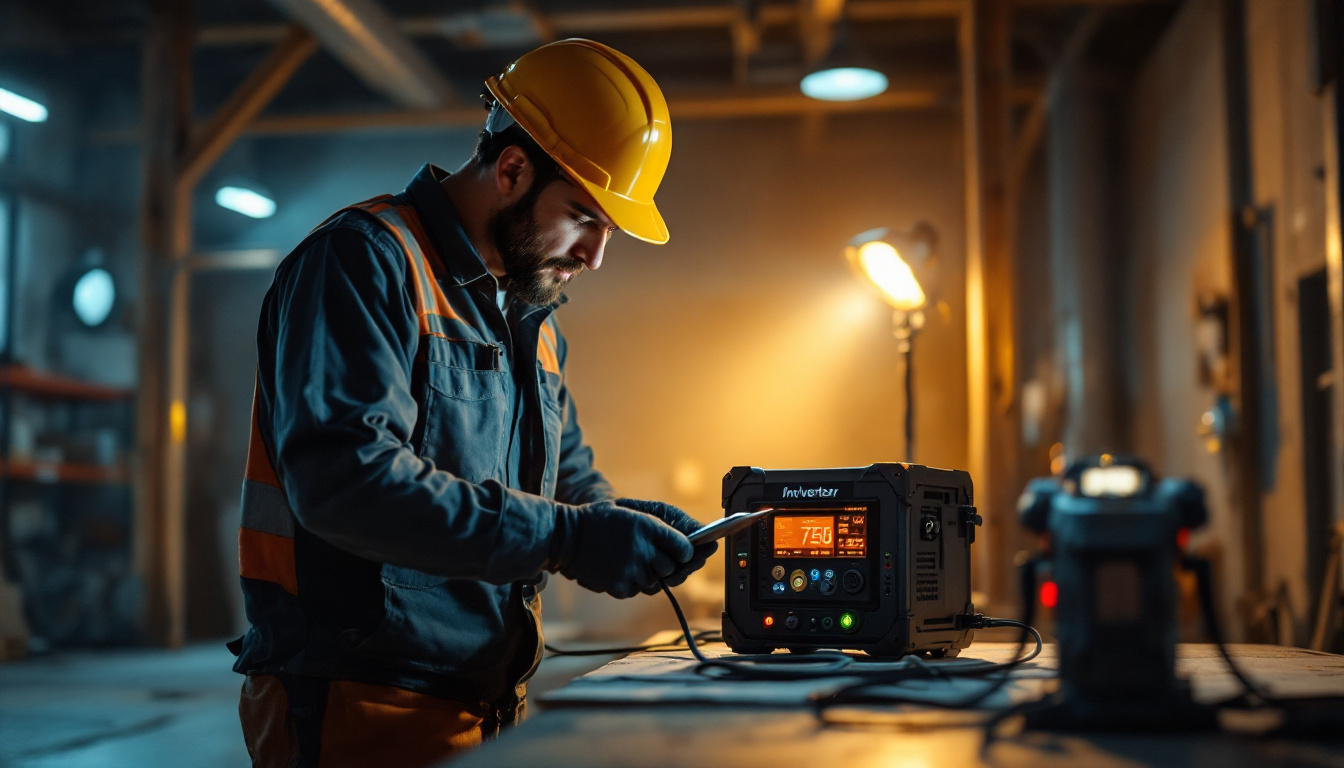
Lighting plays a crucial role in enhancing the functionality and aesthetics of any space. Among the various components of lighting systems, ballasts are essential for regulating the current to fluorescent and HID lamps. However, replacing light ballasts can be a complex task that, if not handled properly, may lead to costly mistakes. This article aims to provide lighting contractors with insights on how to effectively manage ballast replacement, ensuring that projects run smoothly and efficiently.
Ballasts serve as the backbone of many lighting systems, providing the necessary voltage to start lamps and regulating the current throughout their operation. Without a properly functioning ballast, lights can flicker, dim, or fail to operate altogether. Understanding the different types of ballasts and their functions is critical for successful replacements.
There are primarily two types of ballasts: magnetic and electronic. Magnetic ballasts are older technology, typically used in fluorescent lighting, while electronic ballasts have gained popularity due to their efficiency and compatibility with modern lighting technologies.
Each type has its own set of advantages and disadvantages. For instance, electronic ballasts are generally more energy-efficient and provide better light quality, but they can be more sensitive to voltage fluctuations. Understanding these differences can help contractors make informed decisions when selecting replacement ballasts. Furthermore, electronic ballasts often come equipped with features such as dimming capabilities and compatibility with smart lighting systems, making them a versatile choice for contemporary installations.
Ballasts can fail for various reasons, including age, overheating, and electrical surges. A common sign of a failing ballast is flickering lights, which can lead to frustration for clients. Additionally, if a ballast is not replaced promptly, it can cause damage to the lamp, leading to further costs.
Identifying the symptoms of a failing ballast early can save time and resources. Regular maintenance checks can help contractors spot potential issues before they escalate, ensuring that lighting systems remain operational and efficient. Moreover, understanding the lifecycle of a ballast can aid in planning for replacements; for instance, magnetic ballasts typically have a lifespan of about 5 to 10 years, while electronic ballasts can last upwards of 15 years. This knowledge allows for proactive management of lighting systems, minimizing downtime and maintaining optimal performance.
Additionally, environmental factors can also play a significant role in the lifespan of ballasts. For example, ballasts installed in areas with high humidity or extreme temperatures may experience accelerated wear and tear. Therefore, selecting the right ballast for the specific environment, along with proper installation techniques, can greatly enhance the longevity and reliability of the lighting system. By taking these considerations into account, contractors can ensure that their clients enjoy consistent and efficient lighting for years to come.
Proper planning is essential for a successful ballast replacement project. Contractors should take several factors into account to avoid common pitfalls that can lead to increased costs and project delays.
Before proceeding with a ballast replacement, it is vital to assess the existing lighting system. This includes evaluating the type of lamps in use, the current ballast specifications, and the overall condition of the fixtures. A thorough assessment will help determine the best replacement options.
Contractors should also consider the layout of the lighting system. Understanding how each fixture interacts with others can help in selecting the right ballast that meets the specific needs of the project. Additionally, taking note of any environmental factors, such as the presence of moisture or dust, can influence the choice of ballast. For instance, if the lighting is located in a damp area, selecting a ballast that is specifically designed for such conditions can enhance durability and performance.
Selecting the appropriate replacement ballast is crucial for ensuring compatibility and performance. Contractors should consult manufacturer specifications and consider factors such as wattage, voltage, and lamp type. It is also important to choose a ballast that meets local codes and regulations.
In some cases, upgrading to a more efficient ballast can provide long-term savings on energy costs. While the initial investment may be higher, the reduction in energy consumption and maintenance can offset these costs over time. Furthermore, contractors should explore the benefits of advanced technologies, such as electronic ballasts, which can offer improved performance and reduced flicker compared to traditional magnetic ballasts. These modern alternatives not only enhance lighting quality but also contribute to a more sustainable approach by lowering overall energy consumption.
Moreover, it is beneficial to involve stakeholders in the decision-making process. Engaging with building owners, facility managers, and even end-users can provide valuable insights into lighting preferences and usage patterns. This collaborative approach ensures that the selected ballast not only meets technical specifications but also aligns with the aesthetic and functional needs of the space, ultimately leading to a more satisfactory outcome for all parties involved.
Once the planning phase is complete, the next step is executing the ballast replacement. This phase requires careful attention to detail to avoid mistakes that could lead to additional costs or safety hazards.
Safety should always be the top priority during any electrical work. Contractors must ensure that power is turned off before beginning the replacement process. Wearing appropriate personal protective equipment (PPE) is also essential to prevent injuries.
Additionally, it is crucial to follow local electrical codes and standards. This not only ensures safety but also helps avoid potential legal issues that could arise from non-compliance. It is advisable to keep a first aid kit on hand and ensure that all team members are aware of emergency procedures in case of an accident. Regular safety drills can also reinforce the importance of these precautions and ensure that everyone is prepared for unexpected situations.
The ballast replacement process typically involves several key steps. First, the existing ballast must be removed carefully, ensuring that all connections are documented or labeled for easy reconnection. Next, the new ballast should be installed, following the manufacturer’s instructions closely.
After installation, it is important to test the system to ensure that everything is functioning correctly. This includes checking for proper lamp operation and ensuring that there are no flickers or dimming issues. If problems arise, troubleshooting may be necessary to identify and resolve any underlying issues. During this phase, it can be beneficial to consult the ballast’s technical specifications to understand the expected performance characteristics and to verify that the installation aligns with those expectations. Additionally, documenting the entire replacement process can provide valuable insights for future maintenance and can serve as a reference for any similar projects down the line.
After successfully replacing the ballast, several considerations can help ensure the longevity and efficiency of the lighting system.
Implementing a regular maintenance schedule can significantly extend the life of the new ballast and the overall lighting system. This includes periodic inspections to check for signs of wear and tear, as well as cleaning fixtures to prevent dust buildup that can affect performance.
Contractors should also educate clients on the importance of maintaining their lighting systems. Providing guidance on how to identify early warning signs of ballast failure can empower clients to take proactive measures, reducing the likelihood of unexpected replacements.
Keeping detailed records of all ballast replacements, including specifications, installation dates, and maintenance activities, is essential for future reference. This documentation can help contractors track the performance of different ballasts over time and make informed decisions for future projects.
Additionally, maintaining clear communication with clients about the work performed and any recommendations for future maintenance can enhance client relationships and build trust.
Even experienced contractors can make mistakes during ballast replacements. Being aware of common pitfalls can help mitigate risks and ensure successful project outcomes.
One of the most frequent mistakes is neglecting to verify the compatibility of the new ballast with existing fixtures and lamps. Using a ballast that is not designed for the specific lamp type can lead to performance issues and may even damage the lighting system.
Contractors should always cross-reference specifications and consult with manufacturers if there are any uncertainties regarding compatibility. Taking the time to ensure that all components work together seamlessly can save significant headaches down the line.
Another common mistake is underestimating the time required for installation. Rushing through the replacement process can lead to errors, such as improper wiring or missed connections. It is essential to allocate sufficient time for each step of the process to ensure a thorough and accurate installation.
Contractors should also factor in potential delays that may arise, such as unexpected issues with existing wiring or fixtures. Building in a buffer can help accommodate these challenges without derailing the project timeline.
Light ballast replacement is a critical aspect of maintaining efficient and effective lighting systems. By understanding the role of ballasts, planning carefully, executing the replacement process with precision, and avoiding common mistakes, lighting contractors can ensure successful project outcomes.
Investing time in education and training on ballast technology and installation techniques can further enhance a contractor’s ability to deliver quality work. Ultimately, a well-executed ballast replacement not only improves lighting performance but also contributes to client satisfaction and long-term business success.
Ready to ensure your lighting projects are completed with precision and excellence? Look no further than LumenWholesale for all your ballast needs. Our extensive selection of spec-grade lighting products guarantees you’ll find the perfect match for any project, big or small. With unbeatable wholesale prices and free shipping on bulk orders, you can trust that you’re getting the best value without any hidden costs. Don’t let ballast compatibility issues or inflated prices dim your project’s success. Choose LumenWholesale for Wholesale Lighting at the Best Value and light up your projects with confidence and affordability.

Discover how installing wall outlets can boost efficiency and profitability for lighting contractors.

Discover essential tips and best practices for lighting contractors using 750-watt inverters.

Discover the essentials of programmable light timer switches and their compliance requirements in our latest article.

Explore the pros and cons of traditional parking lot street lights versus innovative alternatives.